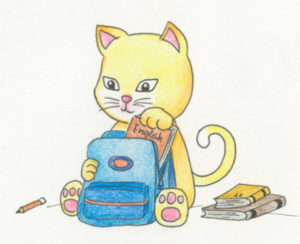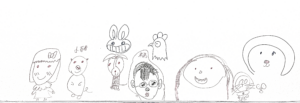
Testing material of the research project
Autism spectrum disorder (ASD) has become increasingly prevalent in Hong Kong nowadays. According to figures from the Education Bureau of the Hong Kong Government, the number of primary school students with autism has increased by 26% from 2017/18 to 2022/23.[1] Since ASD affects social interaction and communication, there has been a view that exposure to more than one language may complicate the development of autistic children in understanding and using languages effectively. Previous studies related to this topic were mainly conducted in English-speaking contexts, focusing on languages similar typologically in terms of linguistic patterns and characteristics. It is, however, unclear whether their findings can be applied to autistic children in Hong Kong who are exposed to two typologically different languages, specifically Cantonese and English. With the prevalence of autistic children in our city, there is a pressing need to understand the effects of exposing them to two typologically different languages on their language development.
To address the above research gap, Dr Emily Ge, Assistant Professor in the School of Education and Languages at Hong Kong Metropolitan University, conducted a research project[2] to investigate the impact of English exposure on the language development of autistic Cantonese-speaking children in Hong Kong. The research team focused on understanding how English exposure affects 5- to 9-year-old “bilingual autistic children” (Cantonese-English speakers), as well as monolingual autistic children (Cantonese speakers). With the support of the Heep Hong Society, the research team compared the two autistic groups to another two groups of typically developing (TD) children (following an expected pattern of growth without significant disabilities), one consisting of “bilingual TD children” (Cantonese-English speakers) and the other of “monolingual TD children” (Cantonese speakers).

Drawings by the child participants of the research project
The research team used standard language assessments and interactive language games to test how bilingual autistic children use their linguistic knowledge to realise focus (the new or contrastive information in a sentence) and to highlight or emphasise such information in conversations, compared to their monolingual autistic peers and TD children. The results show that bilingual autistic children performed similarly to monolingual autistic children in the tasks of describing the general features of a picture as well as answering questions related to the subject and verb of a sentence. The bilingual autistic children even outperformed their monolingual autistic peers when the focus of questions was the object of a sentence. They performed similarly to TD children in general, despite showing slightly lower accuracy when the focus of questions was the subject of a sentence. Importantly, this lower accuracy cannot be attributed to their increased exposure to English, as their performance was comparable to that of autistic children who only spoke Cantonese. This indicates that exposure to both English and Cantonese did not have a negative impact on the accuracy of focus production in autistic children.
Dr Ge's research sheds light on the effects of bilingualism on the language development of autistic children, showing that exposure to two typologically different languages does not impede bilingual autistic children's language development. Rather, bilingualism may even enhance the comprehension and production of focus in autistic children. The research outcomes suggest the advantage of creating rich bilingual environments for children, and having bilingual elements in training programmes for bilingual autistic children.
For more details, please refer to the following publications generated from the research project:
'Comprehension of prosodically and syntactically marked focus in Cantonese‑speaking children with and without Autism Spectrum Disorder', Journal of Autism and Developmental Disorders.
'Bilingual exposure might enhance L1 development in Cantonese–English bilingual autistic children: Evidence from the production of focus', Autism.
For parents who would like their children to participate in further research projects on autistic children’s language development, please contact Dr Ge at hge@hkmu.edu.hk or 27686408.
[1] Source: https://www.edb.gov.hk/attachment/datagovhk/Integrated_Education_EN.xlsx
[2] Reference No.: UGC/FDS16/H13/19














